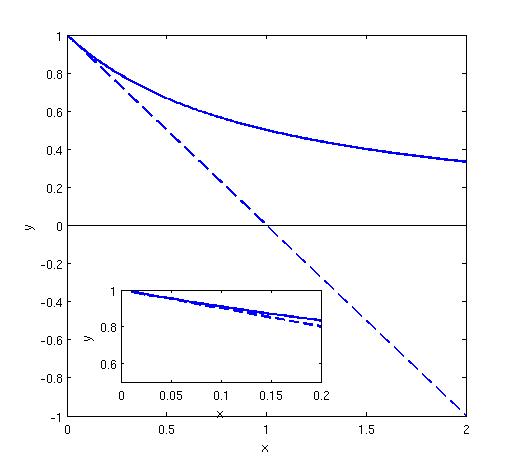A common technique in physics is 'modelling'. This is about constructing a description of a physical phenomenon in terms of physical principles. Often these can be encapsulated with mathematical equations. For example, it's common to model the suspension system of a car as two masses connected by springs to a much larger mass. Here, the large mass represents the car body, one of the small masses represents the wheel, and the other the tyre. The two springs represent the 'spring' in the suspension system (which on a car is usually a curly spring – though it can take other forms on trucks or motorbikes), and the tyre (which has springyness itself). We can then add in some damping effect (the shock absorber). What we've done is to reduce the actual system into a stylized system that maintains the essential characteristics of the original but is simpler and more suitable for making mathematical calculations.
That's great. We can now work on the much simpler stylized system, and make predictions on how it behaves. Transferring those predictions to the real situation, that helps us to design suspension systems for real situations.
There are however, some drawbacks. We have to be sure that our stylized system really does capture the essential features of the actual system. Otherwise we can get predictions completely wrong. On the other hand, we don't want to make our model too complicated, otherwise there is no advantage in using the model. "A model should be as simple as possible, but not simpler" as Einstein might have said.
There's another trap for modellers, which is going outside the realm of applicability for the model. What do I mean by that? Well, some simplifications work really well, but only in certain regimes. For example, Newton's laws are a great simplification on relativistic mechanics. They are much easier to work with. However, if you use them when things are moving close to the speed of light, your answers will be incorrect. They may not even be close to what actually happens. We say that Newton's laws apply when velocities are much less than the velocity of light. When that's the case (e.g. traffic going down a road) they work just fine – you'd be silly to use relativity to improve car safety – but when that's not the case (e.g. physics of black holes) you'll get things very wrong indeed.
A trap for a modeller is to forget where the realm of applicability actually is. In the rush to make approximations and simplifications, just where the boundary is between reasonable and not reasonable can be forgotten. I've been reminded of this this week, while working with some models of the electrical behaviour of the brain. Rather than go into the detail of what that problem was, here's a (rather simpler!) example I can across some time ago now.
I was puzzling over some predictions made in a scientific paper, using a model. It didn't quite seem right to me, though I struggled for a while to put my finger on exactly what I didn't like about what the authors had done. Then I saw it. There were some complicated equations in the model, and to simplify them, they'd made a common mathematical approximation: 1/(1+x) is approximately equal to 1-x. That's a pretty reasonable assumption so long as x is a small number (rather less than 1). We can see how large it's allowed to get by looking at the plot here. The continuous blue line shows y = 1/(1+x); the dotted line shows 1-x. (The insert is the same, at very small x).

We can see for very small x (smaller than 0.1 or so) there's not much difference, but when x gets above 0.5 there's a considerable difference between the two. When x gets larger still (above 1) we have the approximation 1-x going negative, whereas the unapproximated 1/(1+x) stays positive. It's then a completely invalid approximation.
However, in this paper, the authors had made calculations and predictions using a large x. What they got was just, simply, wrong, because they were using the model outside the region where it was valid.
This kind of thing can be really quite subtle, particularly when the system being modelled is complicated (e.g. the brain) and we are desperate to make simplifications and approximations. There's a lot we can do that might actually go beyond what is reasonable, and a good modeller has to look out for this.